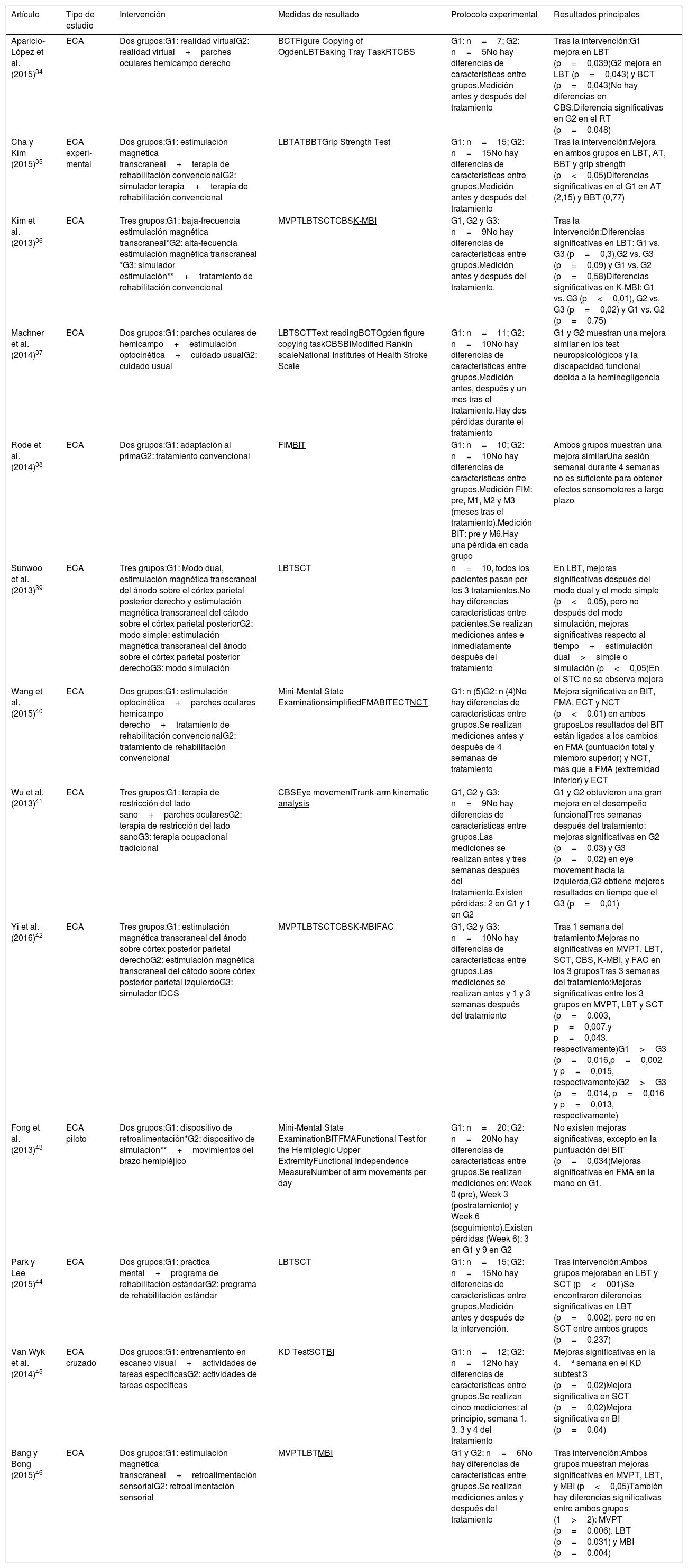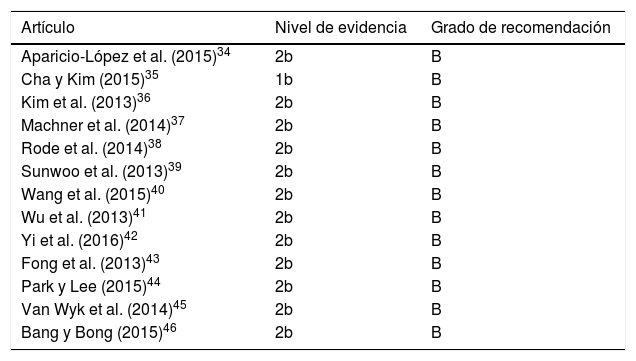Evaluar la efectividad de los enfoques top-down (de arriba abajo) y bottom-up (de abajo arriba) en el tratamiento de la heminegligencia espacial en pacientes con ictus.
MetodologíaSe llevó a cabo una revisión sistemática de la literatura en busca de ensayos controlados y aleatorizados desde enero de 2013 hasta marzo de 2017. Se emplearon las siguientes bases de datos: Scopus, Science Direct, Web of Science, Pubmed y CINHAL. Se evaluaron la calidad metodológica, el nivel de evidencia científica y el grado de recomendación.
ResultadosSe incluyeron 13 estudios (294 sujetos): nueve trabajos analizaron técnicas con enfoques bottom-up (188 participantes) como parches oculares, realidad virtual, estimulación optocinética, estimulación magnética transcraneal o adaptación al prisma; tres ensayos evaluaron procedimientos con un enfoque top-down (94 participantes) como escaneo visual, retroalimentación sensorial y práctica mental; y un estudio incorporó ambos enfoques. Nueve trabajos refirieron mejoras en escalas que evaluaban la heminegligencia espacial, cinco basándose en procedimientos bottom-up, tres utilizando técnicas top-down y uno de ellos combinando ambos enfoques. La discapacidad fue evaluada en nueve de los estudios, describiendo solo tres cambios positivos. Tres trabajos mostraron mejoras significativas en la función motora en los grupos de intervención.
ConclusiónLos enfoques bottom-up y top-down podrían mejorar la heminegligencia espacial, la discapacidad y la función motora en sujetos con ictus.
To evaluate the effectiveness of top-down and bottom-up approaches in the rehabilitation of unilateral spatial neglect in stroke patients.
MethodologyWe carried out a systematic review of randomized controlled trials from January of 2013 to March of 2017. The following databases were searched: Scopus, Science Direct, Web of Science, Pubmed and CINHAL. The methodological quality, level of scientific evidence and the strength of recommendation were evaluated.
ResultsWe included 13 studies (294 subjects): nine studies (188 patients) carried out therapies with a bottom-up approach such us eye patching, virtual reality, optokinetic stimulation, transcranial magnetic stimulation and prism adaption; three studies (94 patients) evaluated therapies with a top-down approach such us visual scanning, sensory feedback and mental practice; one study incorporated both approaches. Nine of these studies showed improvements in spatial neglect scales; five of these used bottom-up approaches, another three used top-down approaches and the remaining study combined both approaches. Disability was evaluated by nine studies, and only three reported improvements. Three studies reported significant improvements in motor function in the intervention groups.
ConclusionsTop-down and bottom-up approaches could improve unilateral spatial neglect, disability and motor function in patients with stroke.










